In my job as a Jewish and Israel educator, I find myself giving presentations across the globe – it’s fun! And one of my favorite things to do recently is to show a Youtube clip of Mahmoud Abbas. Remember this one? [Clip]
If your Arabic is rusty, like mine is (I’ll admit it!), he just said, “From 1947 to today, Israel has committed 50 Holocausts in Palestinian cities and villages.” And then, he lists these “Holocausts”: Deir Yassin, Tantura, Kfar Qassem. So, of course, I ask the audience, how do you all feel when you hear that line? They scream out, “angry, it’s libelous!” And you know what, I say, I agree, completely! But then, I say…one quick question. Raise your hand if you can tell me what happened in Deir Yassin. what happened at Kfar Qassem. Inevitably, the room gets silent really quick.
And I hope my point is clear – you’re allowed to love Israel. All good. But love isn’t enough. We also need to know the full, deeper story of Israel, the good, the bad, the ugly, the everything.
Including…the difficult story of Kfar Qassem: where the Israeli army gunned down 49 Arab civilians as they returned home from work in October of 1956. (breath) That was a hard sentence to say out loud.
If you’re trying to locate Kfar Kassem, it’s not a Palestinian city in the West Bank or Gaza…It’s an Israeli Arab city a little northeast of Petach Tikvah.
This little village isn’t just like any other in Israel. It’s a scar on the Arab psyche. A black mark etched into Israeli history. And an enduring symbol of the uneasy relationship between Arabs and Jews in Israel, the Jewish state they both call home.
For nearly 70 years, the memory of the massacre has haunted Israel’s Arabs. Sadly, as listeners of Unpacking Israeli History know all too well, the Arab-Israeli conflict is peppered with massacres, murders, on both sides! So why does the Arab community commemorate this one specifically? What happened in Kfar Qassem, that day in 1956? Why do we still feel its reverberations, today, in 2023? And, why might this difficult story ACTUALLY be the key to peace in the Arab-Israeli conflict?
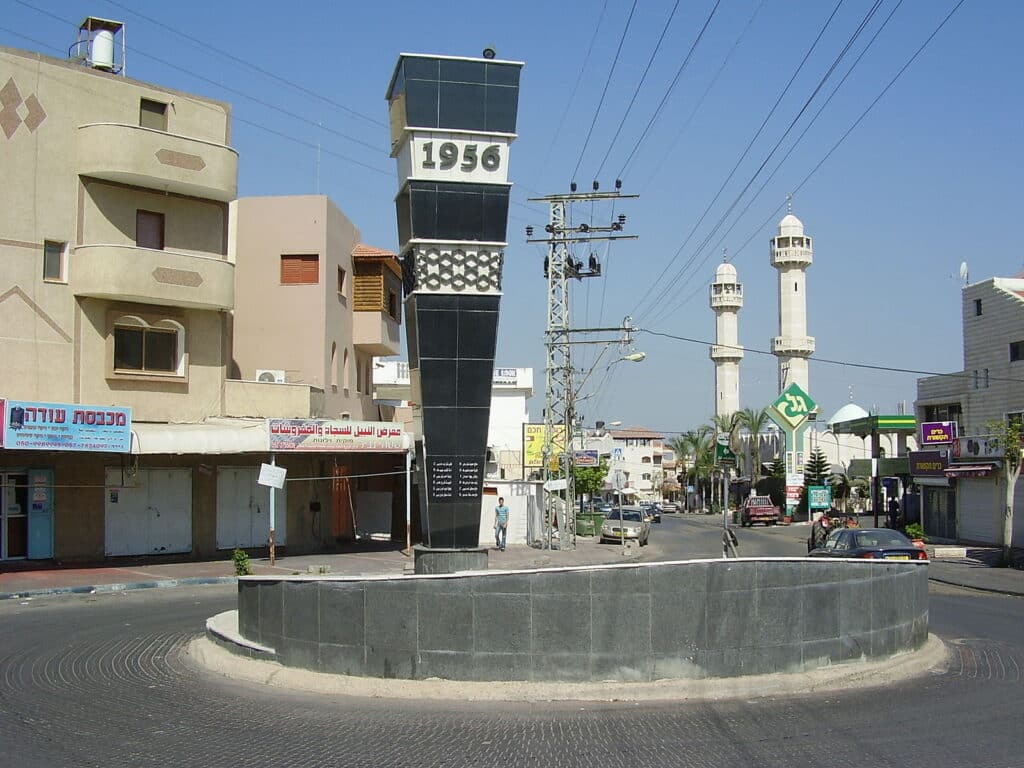
I want to invite you to imagine this for a minute. The Israel of 1956 bears little resemblance to the Israel of 2023. There were no startups back then. No real infrastructure or significant exports. Only an ever-surging flood of refugees, straining the country’s limited resources to their breaking point.
To say nothing of the threats from next door. Compared to Syria, Jordan, and Egypt, Israel is the scrappy little runt of the Middle East, and back then, it was even smaller than it is today. The West Bank, East Jerusalem, Gaza, and the Golan Heights were all in enemy hands, making the Jewish state that much harder to defend. Arab infiltrators regularly sneaked through the country’s porous borders – most to work the lands they had left behind – but some, also known as fedayeen, came to steal or sabotage or kill. (For more on that, you’ll want to check out our episode on Qibye. The link is in the show notes.)
By 1956, Israel’s eastern border was an unofficial battleground, as the Israeli military and border police faced down the infiltrators. And now, another war was brewing.
See, Egypt controlled two of the Middle East’s most important trade routes: the Suez Canal and the Straits of Tiran. No need to take out a map, but if you want to, go for it. And because Egypt and Israel were, shall we say, not friends, the Egyptian President forbade Israel from accessing either one, preventing the development of the Israeli economy. Closing off shipping lanes, to Israel, felt like an act of war.
To make matters even more complicated, in September of 1955, Egypt concluded a significant arms deal with the Soviets. The Czech Arms Deal left Egypt very well-armored, alarming its tiny Jewish neighbor – not to mention the United States, who watched the growing Soviet influence in the Middle East with alarm. But the straw that broke the camel’s back was Nasser’s nationalization of the Suez Canal in the summer of 1956. Add a constant stream of Egyptian infiltrators in Israel, and you have all of the ingredients for a full-scale conflagration. (By the way, Israel nerd corner alert: after the Suez Crisis, Israel officially declared closing off shipping lanes to be an act of war.)
So yes, war was coming. But no one could have predicted that the first salvo would be fired not on the sands of the Sinai, but in a small, bucolic village inside Israel. That the first casualties of the war would be the 49 civilians killed at Kfar Qassem.
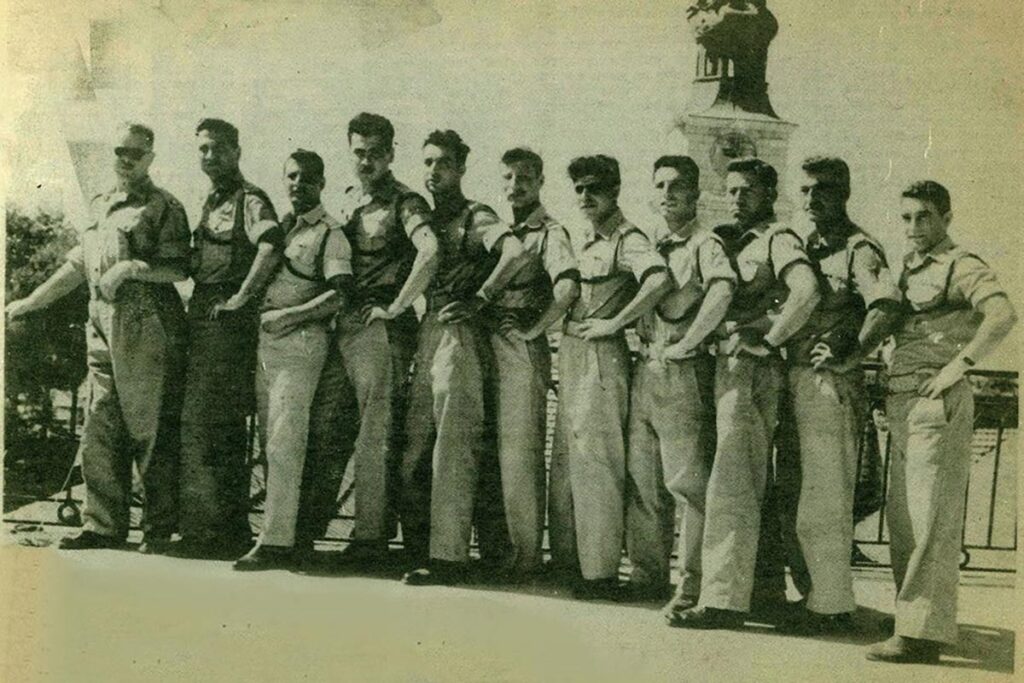
Now, I’m sure that plenty of historians might disagree with that analysis. And I’m not trying to say anything about these 49 civilians leading to the Suez Crisis or the Sinai War, nothing like that. But I’d argue that we can’t talk about the Suez Crisis without talking about this moment. And, just as importantly, I’d argue that in the sweeping story of the Suez Crisis, these ordinary men and women deserve to be remembered.
They were 49 of Israel’s 156,000 Arabs. Over 10% of Israel’s population. And before diving into the events of Kfar Qassem, let’s talk about these Arab citizens of Israel. I think that will give us the context we need to understand what happened in Kfar Qassem that day.
I think I’ve made it clear that life in early Israel wasn’t exactly easy for anyone. But despite the lack of security or resources or money, Jewish Israelis were free to come and go. Arabs, on the other hand, lived under martial law until 1966. Practically speaking, that means they had to worry about curfews, collective punishment, and the demolition of their buildings and homes.
Does that surprise you? Does it make you wince?
It’s certainly hard for me to say out loud. But as I talk about often, we can’t build a better future without taking a good, hard look at the past. So I’m looking at the past as completely as I can. And what I see in this instance is a real inconsistency between Israel’s stated ideals and its sometimes-ugly reality.
A decade before Ben Gurion declared independence, he sketched out a rapturous vision for the Jewish state. At the 20th Zionist Congress in 1937, he rhapsodized about “one law for citizen and stranger alike. The Jewish state will be an example to the world in its behavior toward minorities and foreigners.”
And to Israel’s credit, when Ben Gurion signed the Declaration of Independence in 1948, it read “The State of Israel…. will foster the development of the country for the benefit of all its inhabitants; it will be based on freedom, justice and peace, as envisaged by the prophets of Israel; it will ensure complete equality of social and political rights to all its inhabitants irrespective of religion, race or sex.”
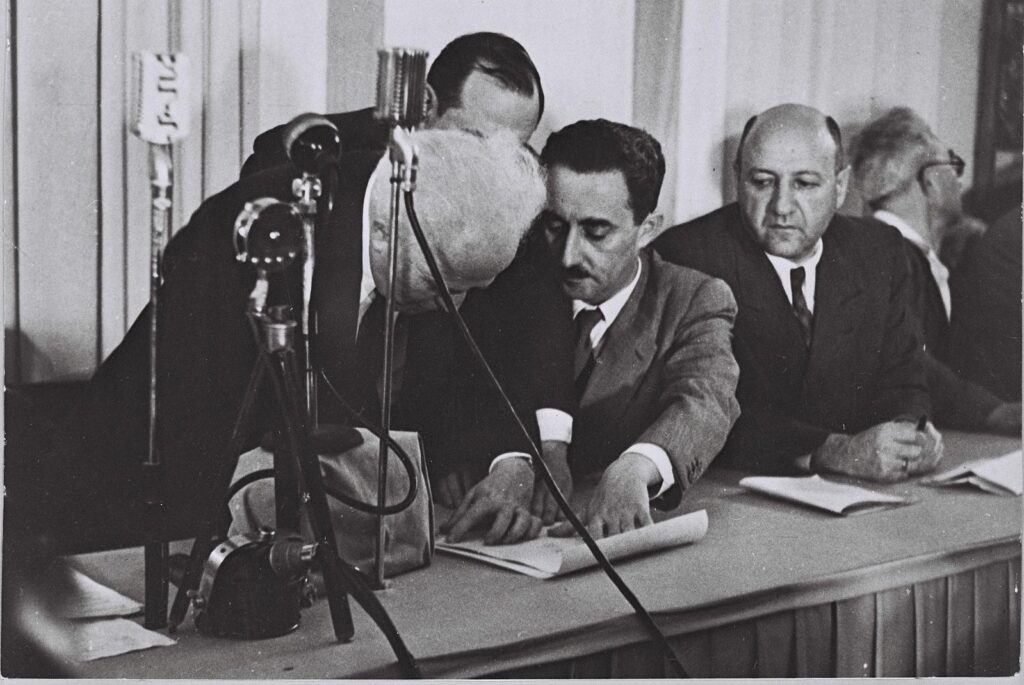
But though the Declaration of Independence is enormously important, it doesn’t exactly enshrine laws. So from 1948 to 1966, Arabs in Israel lived under military rule. In public, Ben Gurion’s government justified the policy as a matter of national security. This is now the “to be sure” sentence in journalism: To be sure, security was a major concern for Israel, and that is an understatement. But as Israel’s internal security agencies made clear, Israel’s Arab minority wasn’t the threat. Israel’s neighbors were.
And some in the government knew it. Even the hardliners – the men obsessed with the safety of the Jewish people and the Jewish state – believed that security was a flimsy excuse for keeping Arab communities under military rule for nearly 20 years. Among them was – come on, you know we can’t go more than an episode without saying his name – my friend and yours, Ben Gurion’s fiercest opponent, the leader of the right-wing Herut party and former Irgun commander Menachem Begin. Welcome, Menachem Begin! Beginning in 1949, Begin wrote that martial law was “a harmful anachronism.” Maaaaaybe it had been necessary during the 1948 war. But Israel had won that war. And the Arabs who remained within its borders were offered citizenship. So Begin argued that there was no reason Arab citizens should live under martial law when Jewish ones didn’t.
Ready for some armchair psychology? Part of me wonders whether Begin might have identified with Israel’s Arabs. Because in one of those dark ironies of history, the terms of Israeli martial law were based on the laws of the British Mandate that had controlled the country just a decade before.
If you’ve already heard our Black Saturday episode, then you know that the Brits were Begin’s sworn enemies. That he’d lived under deep cover for years, avoiding arrest even as he planned attacks on British targets. And you also know how deeply Begin had longed for a state. So perhaps he empathized with the Arab villagers who found themselves in limbo, unable to build a real life while the military restricted their movement and their freedom. Food for thought!
But governments around the world have a long history of sacrificing personal liberties in the name of state security. So as tensions with Egypt heated up in the fall of 1956, the Israeli government began to worry about all of their borders. The armistice lines that divided Jordan and Israel had never presented much of a deterrent for Arab infiltrators sneaking in from Jordan – again, listen to our Qibye episode, if you haven’t yet. And if Egypt was ready for war, Jordan might very well try to get in on the action.
All of which left the Israeli military very, very concerned. Because the Jordan-Israel border – or rather, the armistice line that divided the countries – was peppered with Arab villages. And if the Jordanians attacked, some in the Israeli military worried that Arab villagers might very well help. The Israelis had fought a war on two fronts before. They weren’t particularly eager to do it again. But they were prepared.
Ordinarily, curfew in the Arab villages was 10pm. But as the military geared up to invade the Sinai, on October 29, 1956, the commander in charge of Kfar Qassem’s sector made a fateful decision. The historical record isn’t exactly clear as to why. Was he acting under implicit orders, or did he go rogue?
We don’t know. What we do know is that Colonel Yissachar Shadmi, the brigade commander of the “Triangle” district that included Kfar Qassem, made the simple decision to move the curfew up by five hours. Effective immediately, all villagers were to remain in their homes starting at 5pm.
In the age of the iPhone, it’s pretty easy to spread information. My phone spends all day distracting me with “breaking news” and “urgent alerts.” That’s a lie, it’s primarily just scrolling through TikTok and watching trends, people making incredible omelets that seem impossible, I don’t know how they do it. And of course basketball highlights, you know I love basketball. But if something big is happening, chances are I’ll find out about it immediately. But 1956 was not exactly the digital age. There were no phone alerts, no Twitter.
I’m prepared to bet that the villagers working the fields didn’t even have a radio. So there was no way for the workers to know their curfew had just moved up by five hours. And there was no way for them to know that the penalty for breaking the curfew was death.
Because Shadmi’s orders were clear. “I don’t want sentimentality,” he told his battalion commander, Major Shmuel Melinki, a few hours before the curfew went into effect. “I don’t want detainees.” And if someone didn’t know about the curfew? Shadmi answered in Arabic. “Allah yerhamu.” Sounds almost exactly like Hebrew. Hashem Yerachem. “May God have mercy on them in death, as He didn’t, in life.”
But God covered his eyes.
Less than 45 minutes before the updated curfew took effect, the platoon in charge of Kfar Qassem spread out around the village. A sergeant went to tell the mukhtar, or elder head of the village, about the new rule. But Melinki had already passed on his orders word-for-word. And though most of the platoons ignored the command to shoot innocent villagers who were unaware of the curfew, one platoon obeyed their orders to the tee.
Between five and six pm on October 29, 1956, shots rang out through Kfar Qassem. Men. Women. Boys. Girls. Some historians put the death toll at 49, others at 51. But it’s worth understanding who these victims were. They were people with families. The elderly. Adults. Teenagers. Children. Civilians who had done nothing wrong, other than being Arabs in a village near Jordan on the day that the army was preparing for war. In my dissertation on Israel education, I wrote about the possibility of being passionate about Zionism and having empathy for others. The two can go hand and in hand. This is one of those moments.
I’m not Israeli. But every time an Israeli is killed in a terror attack, I feel it. Because I understand that the bullet, the bomb, the boulder – all of them could just as easily have been aimed at me. That to a terrorist, an Israeli is a Jew is a Jew is a Jew.
So I think I can understand the pain Kfar Qassem caused in the Arab community. The pain it causes still. Because Kfar Qassem is a rallying cry. This is what it means to be an Arab living in Israel? This is what we can expect? To be put under curfew and shot coming home from work?
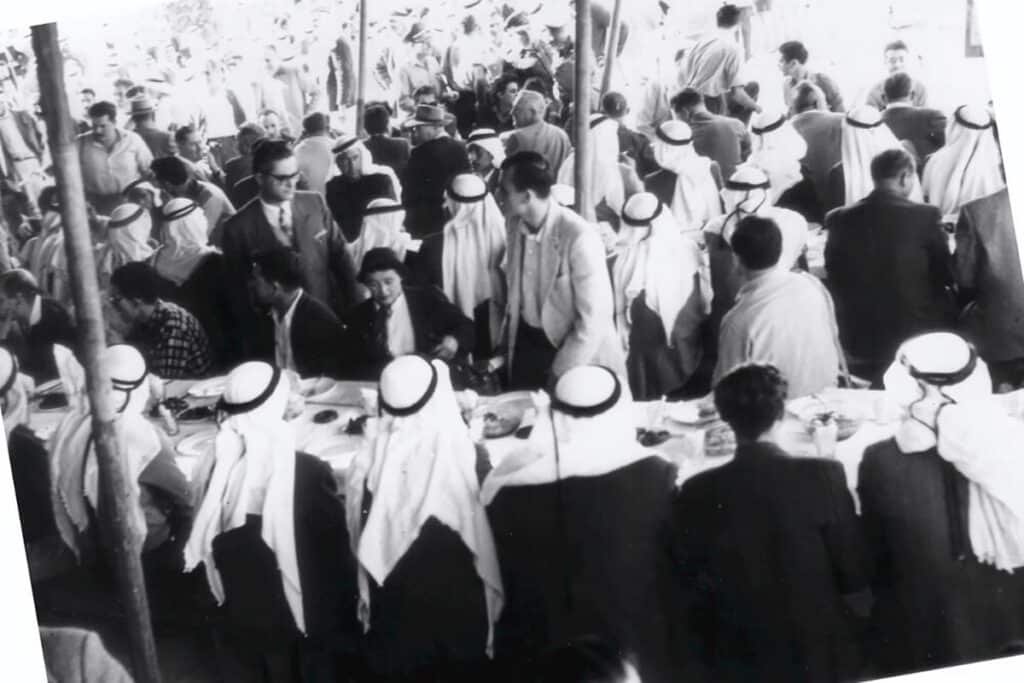
And I feel a real empathy with that cry. Jewish people know what it’s like to be second-class citizens. And we know what it’s like to be subject to a government that doesn’t protect you – or worse, that participates in the violence. It’s heartbreaking.
To add insult to injury, Prime Minister Ben Gurion and the military censor tried to cover up the whole affair. But the facts were too shocking to keep under wraps. The story leaked with the help of a few rogue Knesset members, who had visited the wounded and taken their testimonies. Newspapers published all the gory details. The Israeli public was horrified. And I want to be clear. This is not one of those stories where there are conflicting accounts of what happened. Did it happen? Did it not? Was there provocation? Was there not?
Over the next two years, eleven soldiers were brought to trial before Judge Benjamin HaLevy. If that name sounds familiar to you, that’s because Judge HaLevy has shown up in this podcast before. Four years earlier, HaLevy had handed down one of Israel’s most infamous rulings: that Rudolf Kastner had “sold his soul to the devil,” and if you don’t know what I’m talking about, go back and listen to the Kastner trial episode or watch our video about it below. HaLevy was a man of… strong opinions. And his ruling on this event was iconic.
Because the defense chose a pretty weak line. True, the soldiers were just following orders. But anyone with a moral compass could have seen that the order was – as Judge HaLevy put it – “manifestly illegal,” with “a black flag flying over it.”
HaLevy sentenced eight men to decades in prison. But the sentences were quickly commuted, and in the end, no one served more than two years. And Yissachar Shadmi, the man who had moved up the curfew and given the order to shoot on sight? The man who had simply said, “May God have mercy on them” when asked what to do if the villagers didn’t know about the curfew?
He, too, was put on trial on charges of “exceeding his authority.” For the Arab community, Shadmi’s trial was further salt in the wound. He was sentenced to pay a symbolic fine of only a few cents. Arab Israelis have not forgotten the insult of Shadmi clutching his symbolic coin, as though saying this is what 49 lives are worth.
And some historians believe the plot went even deeper. That the massacre was in fact part of a larger, more nefarious plan. Though the official documents remain sealed, the testimonial evidence has trickled out over the years. The Israeli government did have a secret plan. They called it Mivtza Chafarperet, aka Operation Mole.
You might have heard discussion, or accusations, about population transfer, about some of Israel’s founding fathers advocating to get rid of local Arabs. And that is a whole thorny complicated story, and one that deserves its own full episode. So I’m not going to get into it here. (But as usual, I will say, please, please, look at the sources in the show notes!) For our purposes, I will say that Operation Mole’s objective was to compel Arabs to abandon their villages, and end up either in detention camps in Israel’s interior, or to cross into Jordan.
But again, we don’t know the full story here. Because as I said before, the records associated with the incident remain sealed. Historians and lawmakers are still petitioning the government to publicize all the information, arguing that the Israeli public deserves to know all the details of what really happened. In the meantime, each year, the Arab community in Israel holds a day of remembrance for the 49 victims. And, importantly, several Israeli officials – including two presidents – have attended the event and formally apologized for what happened on that day in Kfar Qassem.
Now, going off script here, I read the Apple review comments a lot. And one comment really bothered me. It said that we’re just doing propaganda on Unpacking Israeli History. Nothing is further from the truth. I appreciate all the comments, but it’s just not true. And I can prove it. You just listened, and are listening, to this episode. So that’s just an important pause for the listeners out there. This is real history, the real story about Israel.
And listen, there are lots of silly jokes I could make about Jewish guilt. But there’s a nugget of truth in there. Don’t forget that the holiest day on our calendar is Yom Kippur – the day of atonement. The day we stand in front of God and confess to the sins we’ve committed over the past year. But God doesn’t forgive the sins we’ve committed against our fellow human beings. For that, we have to go straight to the source. So how do you atone, how do you ask forgiveness from your neighbor, for an event like Kfar Qassem?
The way we answer that question matters. Because it’s not just about Kfar Qassem. The answer applies to the entire fraught and fractured history of Jews and Arabs in the Middle East.
Last year, for a different podcast I made, called The Power Of, I sat down with Professor Moshe Halbertal to talk about his view of forgiveness. We weren’t talking about specific events, but something he said really stuck with me, and is something I was thinking about in working on this episode, about the story of Kfar Qassem, and with all of Israeli history. He said, “Part of the pain of being harmed sometimes is being isolated in your harm through an ongoing environment of denial.”
That’s why I think Israeli officials are absolutely doing the right thing by apologizing for Kfar Qassem. Because how can any of us – Jewish or Arab, Israeli or Palestinian – ever heal if we deny the pain of the other side? If we cannot stare the truth in the face and say this is what happened?
We can’t. But I think we still have a ways to go. The Knesset, Israel’s parliament, has repeatedly voted against a bill that would acknowledge state responsibility for the tragedy. I think, and it’s just my opinion, that’s the wrong move. There’s power in staring history in the face. But by keeping it shut away, by trying to conceal what really happened, they’re implicitly saying, this is too much to stare in the face. This is something we can’t confront.
But we can confront it. We have to. Because otherwise, we’re mired in the past, not looking forward, towards the possibility of a better future.
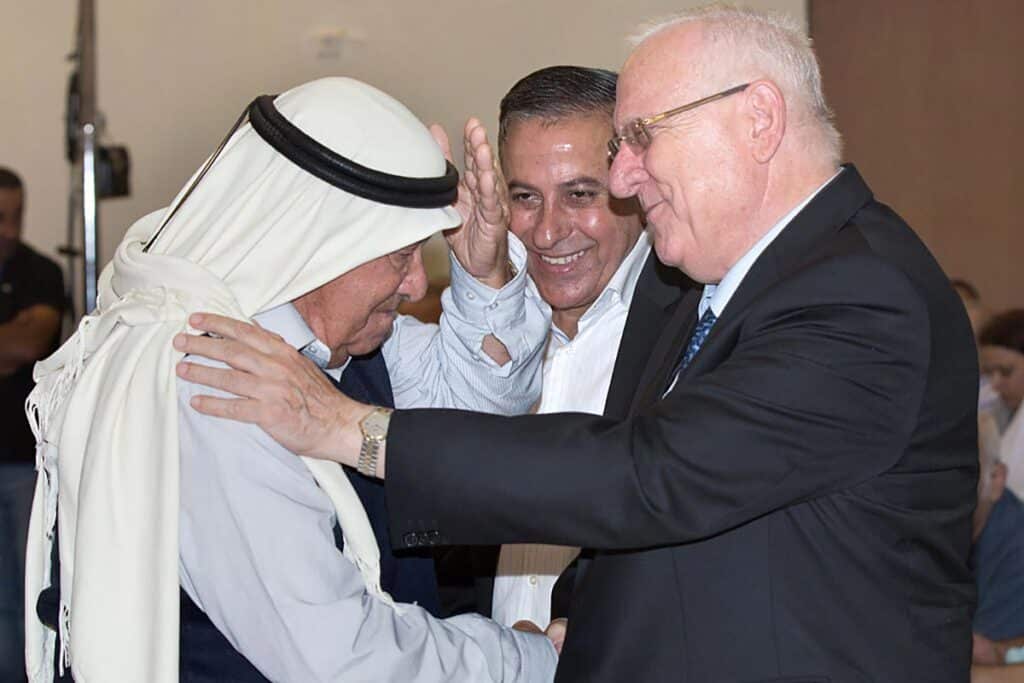
And I have to believe that a better future is possible. That both sides have the ability to acknowledge the hurts of the other. To do what Mahmoud Abbas got wrong, by not acknowledging the Munich Massacre in 1972. But also to forgive. Because, as Professor Halbertal also said, atonement and forgiveness mean that you’re “not possessed by the past, not possessed by the power of the other. I have a claim against someone for harm that someone did to me or to another person. And I decide not to claim it. I decide to let go of the past. I decide not to be imprisoned in my need for retribution, revenge, compensation. I want to let go. Among other things, what I want to do is free myself of the grip of the person who’s harmed me.”
What would it look like if all of us in the Middle East approached our history like that?
If we acknowledged the harms we’ve done to one another, truly and openly… and then we learned how to liberate ourselves from the past and move forward? It’s a difficult question to answer, and I don’t know if it will ever happen. But we’re doing our part here, on Unpacking Israeli History, to shine a bright light on all aspects of the past. Because that’s the first step in letting the past go and looking towards a brighter future.
So that’s the tragic story of Kfar Qassem in a nutshell, and these are your five fast facts.
- In 1956, Israel was battling a commercial embargo from Egypt, as well as a steady stream of infiltrators who had already killed 1,300 Israelis. By October of 1956, Israel – with the encouragement of Britain and France – prepared to invade Egypt.
- As the country prepared for war, the IDF imposed a curfew on all Arab villages, which were already under martial law.
- One commander moved the curfew up by five hours and instructed soldiers to shoot violators on sight. Most platoons disobeyed the order, allowing workers who didn’t know about the curfew to return to their homes. But one platoon followed orders, shooting the Arab Israeli citizens of Kfar Qassem on sight as they returned home from work. All told, around 50 people were murdered.
- Despite the government’s attempt to censor the incident, the public found out. Eleven soldiers were put on trial and eight were sentenced, but all were pardoned after two years. The officer who gave the command was acquitted of murder, ordered only to pay a symbolic fine. This further enraged Israel’s Arab population.
- In 2022, evidence emerged that what happened there in Kfar Qassem in 1956 was likely related to a government plan called Operation Mole, meant to “encourage” Arab villagers to flee to Jordan or to another area. Still, many of the official documents surrounding what happened at Kfar Qassem and Operation Mole remain classified to this day.
Those are the five fast facts, but here’s the enduring lesson as I see it.
I’m not a pacifist. I don’t think you can be a pacifist if you want a Jewish state to exist in the Middle East. So I understand that war – while ugly – is sometimes necessary. The phrase that Benny Morris used years ago to describe the war of independence, which is, “To make an omelet, you have to break some eggs” makes me instinctively uncomfortable, but I get it. And I also understand that the leaders of 1950s Israel were dogged by the very real sense that the sky could fall on them at any moment. That their decisions were all that stood between their people and oblivion.
At the same time, none of that erases the fact that Israeli leaders made serious mistakes. That for nearly 20 years, Israel’s Arabs were forced to live under martial law, which like I said, Menachem Begin fought to end. And that as war approached, one IDF platoon killed 49 Israeli citizens. These are facts we need to acknowledge.
Too often, Israel – unlike any other country in the world – isn’t allowed nuances or gray areas or moral ambiguity. And I’ll explain why. One side argues that Israel is pure evil. The other reacts in equally one-dimensional protest: no, it’s pure good. But that’s not what Israel is about. Heck, that’s not what nuanced thinking is about. We should be able to talk about martial law, and Kfar Qassem, and Mivtza Chafarperet, without feeling like we’re questioning the legitimacy of the state, or its right to exist. Because that’s such a stifled, cramped way of thinking. Every country has a track record. No government – hell, no person – has entirely clean hands. Acknowledging that doesn’t take away from the Zionist project.
Because a morally strong country – a morally strong person – doesn’t back down from their mistakes. And if the Jewish people, the Jewish state, is ever going to reconcile with our Arab neighbors, then we have to be able to fully recognize the trauma that moments like Kfar Kassem inflicted. Just like our neighbors will have to recognize our decades of trauma and mistrust. Like it or not, we live side by side. So this mutual recognition is the only way that our fractured country will ever begin to heal.